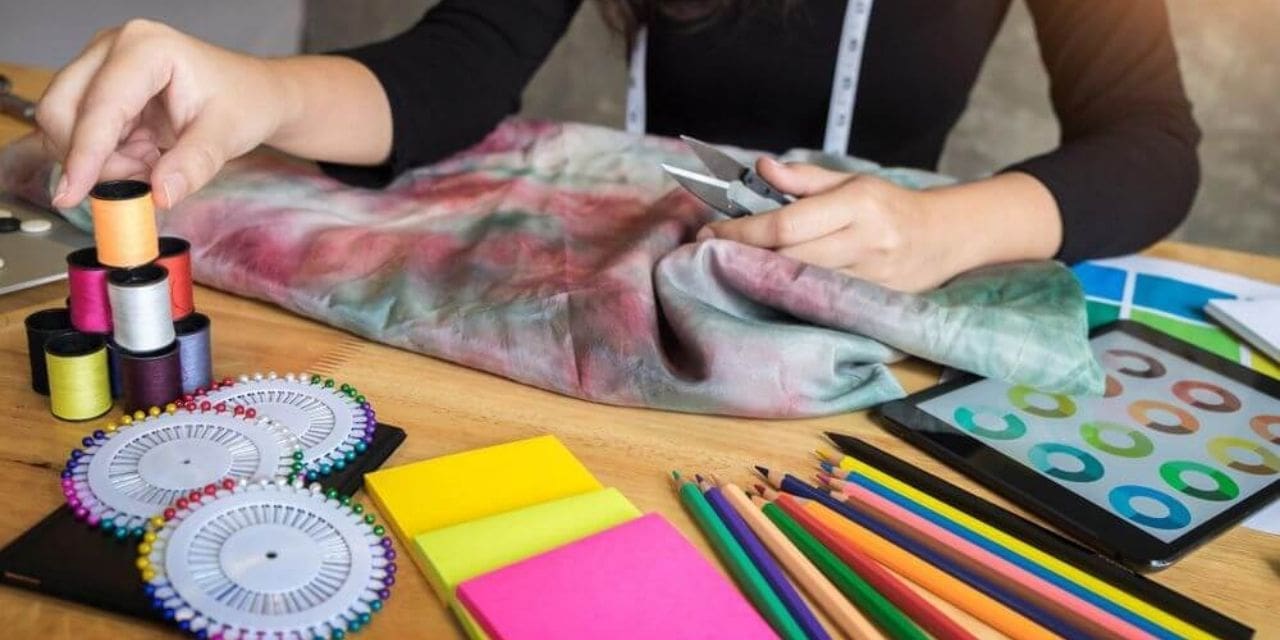Fashion design and textile students understand better than anyone just how costly high-quality textiles can be. While design school can be an amazing experience, it’s certainly not cheap. A lot of design tools and fabrics are expensive, yet most design schools require students to stick to a limited budget. Although excellent design tools are a worthy investment, it’s a good idea for students to try to save money on materials. Here are some tips and tricks that design students can use to submit a spectacular yet cost-effective fashion design project.
Buy Materials in Bulk
Buying fabrics in bulk can save you a lot of money as a design student. Search small factories and warehouses for textiles in bulk instead of wholesale stores. Many local fabric shops offer entire rolls of fabric at a discounted price. It is always a good idea to collaborate with classmates when purchasing supplies. Purchasing an entire roll of expensive fabric such as silk as a group is significantly less expensive than buying the same fabric individually.
Search Thrift Stores
In addition to shopping for materials at local fabric shops, explore local thrift stores as well. It is not a bad idea to buy supplies second-hand to save a bit of money that can go towards fabrics. You can easily find glue guns, pencils, sharpies, coloured paper, and high-quality needles at most thrift stores. If you are lucky, you might even come across a second-hand machine. As a design student, you can find a lot of hidden gems in thrift stores. On top of browsing clothes for inspiration, you should always keep a look out for fabrics and other materials you could use for your design while you’re there.
Reuse Fabrics for Projects
The costs can really pile up for fabric-intensive projects. A good tip is to reuse fabrics as much as you can. When possible, reuse fabrics from previous projects for new ones. You can also repurpose fabric from old clothing, curtains, bed sheets, blankets, comforters, and other linen for your new designs. “With so much materials ending up in landfills thanks to fast fashion, upcycling and reusing textiles is more crucial than ever,” explains Helen Turner, a writer at 1 Day 2 Write and Write my X. “Fashion design students can save money and design more sustainably by reusing fabrics.”
Reuse Fabrics for Toiling
Using old fabrics for toiling is a cost-efficient way to realize and test your vision before the final garment. An excellent fabric to reuse is calico because it can easily be deconstructed and reused for future toiles. If your final garment is made of cotton, you can reuse old shirts or bedsheets for your toile. Curtains are wonderful sources of fabric. Reuse old voile curtains to make toile organza or gauze curtains into toile chiffon. Too often, design students create a toile and never touch it again. By taking old toiles apart and using the fabric for future toiles, you can save a lot of money over time.
Reuse Haberdashery
It is a wise move as a design student to reuse haberdashery as well. While it may not seem like much at first, the cost of buying new buttons, zips, and closures consistently can add up in the long run. If you don’t want to reuse haberdashery for your final garment, at least reuse them for your toile. “Design students should get in the habit of collecting buttons, zippers, lace, elastic cuffs, and waist bands before disposing of any old clothing,” advises Jean Arsenault, a fashion blogger at Brit student and Next Coursework. “You never know when you might need them.”
Use Household Materials for Samples
Using new materials to sample your design ideas is wasteful and unnecessary. A more sustainable alternative is to create samples out of materials lying around your home. In addition to using fabric from household items, you can get creative with tools as well, such as using a pizza cutter as a rotary cutter.
Conclusion
As a design student, it is good practice to rely on your skills rather than expensive materials for your projects. A well-tailored garment made of less expensive fabrics demonstrates your talent and skills as a designer. Some of the most beautiful designs come out of cheap fabrics. But with some creativity, high-quality textiles don’t have to break the bank. By following these practical budget-friendly tips, students can focus more on designing and worry less about cost.
Author:

Michael Dehoyos,
lifestyle writer and editor at Thesis writing service and Research paper writing service.

